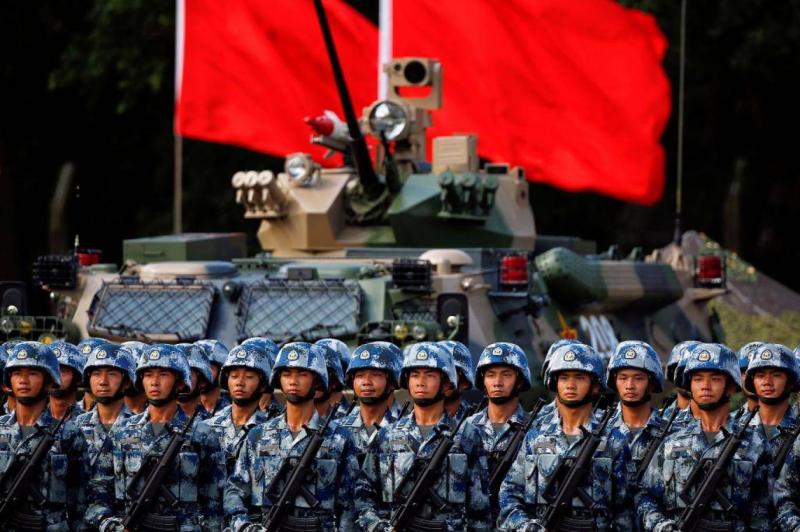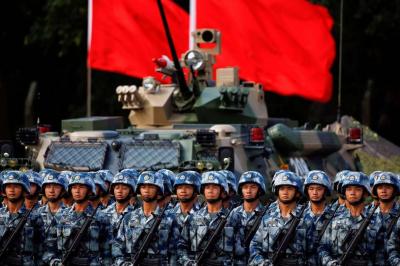During the Cold War, the global community became familiar with the concept of nuclear deterrence equilibrium, where both the Eastern and Western blocs—Warsaw Pact and NATO—strived to maintain a comparable level of nuclear weapons to prevent any side from engaging in nuclear adventures, knowing that the other's nuclear readiness would result in catastrophic retaliation. In the 1950s, they asked the famous American physicist Albert Einstein about World War III, to which he replied: "What I know is that World War IV will be fought with stones and sticks," indicating the dire consequence of a third global nuclear war.
However, almost three and a half decades after the collapse of the Soviet Union and its subsequent humiliation by NATO, the Russian Federation—a legitimate successor—has begun rearming, pulling the world once again into the realm of nuclear chaos. Yet, what is new and more intriguing in today's context is what China is doing regarding nuclear deterrence, after achieving its monetary deterrence goals. What does this mean?
In short, China’s narrative mirrors that of other emerging global powers, where it thrives internally with significant growth, eventually leading to a leading economic experiment that extends externally through investment channels and partnerships with other nations. This has been evident since the 1980s, culminating in China's transformation into a monetary deterrent power, whether through its investments in U.S. Treasury bonds—although it has been decreasing recently—or by invoking historical ideas from ancient Chinese history, such as the Silk Road, which has now morphed into the "Belt and Road Initiative" that enhances China's monetary deterrent against Western economic dominance, particularly American hegemony.
The new chapter in China's story today is about nuclear deterrence, which serves as a literal embodiment of major polar powers once they strengthen their stance and seek to protect their strategic interests globally, preventing their subjugation to the decisions of other polar forces. For over two years, U.S. intelligence has been monitoring what they term China's "new nuclear Great Wall," where satellites have shown containers for missiles being prepared underground, anticipating their filling with ballistic missiles armed with nuclear warheads.
The first question that might arise in the reader's mind is: "Is China exploiting the current global geopolitical fluidity, not to mention fears of chaos in the U.S. following the upcoming presidential elections, to expedite its strategic nuclear programs?" The fact is that China is adept at leveraging all circumstances, even negative ones, and turning them into positive momentum—this stems from a Confucian philosophical mindset.
China currently observes the U.S. facing numerous internal obstacles, both economic and military, with multiple traps set for Washington—some in the Middle East and others in the Arabian Gulf—alongside a significant ongoing wound in Ukraine that has recently become very inflamed, warning of unpredictable reactions from Tsar Putin, who has suffered painful blows on his country's borders.
Perhaps the most genuinely alarming issue for China is the ongoing American internal conflicts and the fear of a potential civil war among Americans in the near future. Those familiar with Chinese-American relations know well that after the disorder at the U.S. Capitol on January 6, 2021, U.S. Army Chief of Staff General Mark Milley communicated with his Chinese counterpart, General Li Zuocheng, after U.S. satellites monitored Chinese nuclear movements. He reassured him that "everything is under control," yet this experience may have left a negative impact on the Chinese, reinforcing their pursuit of greater nuclear power.
Are the fears of America alone driving the Chinese towards acquiring more nuclear warheads? The answer may indeed be surprising, as Beijing today perceives itself caught between Washington's nuclear hammer and Moscow's overwhelming nuclear vulnerabilities. Some may argue that fearing America is justified, but that Russia is a friendly nation to China—how does that reconcile?
On the surface, it seems that Beijing and Moscow are in a quasi-alliance, yet in reality, it is a pragmatic temporary alliance, as the civilizational layers of Orthodox Slavic culture in Russia do not historically align with the Confucian counterpart in China. Therefore, the Chinese firmly believe that Moscow represents a closer threat, and the current rapprochement aims to counter American global hegemony.
At the same time, the Russians—numbering around 150 million—understand that without their nuclear arsenal, China, with its population of 1.4 billion, could pose a serious existential threat to Russian nationalism at any given moment. The latest reports from the Stockholm International Peace Research Institute indicate that China is hurrying to double its nuclear stockpile from around 500 warheads to 1,000 by 2030.
It is no longer a secret that Chinese leader Xi Jinping views building a nuclear deterrent as essential, as it has a profound psychological impact on American and Western perceptions of international power dynamics. Historically, for decades, China has sought to build and maintain a credible second-strike nuclear capability to secure a stance of mutual vulnerability with the United States—has the time now come to shift this strategy from one of subjugation to mutual readiness?
It is evident that the road to Beijing obtaining more than 5,000 nuclear warheads—like those possessed by Washington, excluding undeclared ones—is long. Nonetheless, the reality remains that a nuclear war between Washington and Beijing does not require such massive numbers; merely a few dozen warheads from either side would suffice to result in millions of casualties on both ends.
Is the world returning to nuclear conflict once again? It seemed to all that after the disintegration of the Soviet Union, the specter of nuclear confrontation had vanished and its fears had dissipated. However, it later became apparent to everyone that nuclear deterrence balances had prevented war during the cold conflict, and the current international relations landscape has moved beyond the Cold War era, regrettably leaning toward a more heated reality. Every existing or emerging polar power will now inevitably seek to protect its gains and international presence, even through the terrifying risk of nuclear weapons.
What remains before wrapping up? It is claimed that the renewal of U.S. nuclear capabilities, which has recently begun leaking to global media, is the underlying reason behind China and other nations' pursuit of nuclear weapons again. What about these programs? More to come, God willing.




